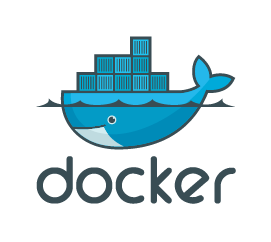Docker Compose Overview & Usecases
 Overview
Overview
Docker Compose is a tool that simplifies the definition and management of multi-container applications. It allows developers to configure all the services their application requires (such as databases, APIs, web services, etc.) in a single YAML file. Using this file, Docker Compose can create and start all containers with a single command, significantly streamlining the workflow.
Key Benefits of Docker Compose
- Simplified Control: Docker Compose centralizes the management of multi-container applications in one YAML file, which simplifies orchestration and coordination.
- Efficient Collaboration: The Compose file is easy to share, enabling collaboration across development and operations teams.
- Rapid Application Development: By caching the container configuration, Docker Compose speeds up environment changes, allowing developers to quickly restart services without needing to rebuild unchanged containers.
- Portability Across Environments: The use of environment variables in the Compose file enables easy customization for different environments.
- Active Community Support: Docker Compose benefits from an extensive community, providing a rich source of resources and troubleshooting support.
How Docker Compose Works
Docker Compose uses a YAML configuration file, commonly named compose.yaml or docker-compose.yaml, to define and manage your application's services. This file follows the Compose Specification, which formalizes how multi-container applications are defined.
The lifecycle of a Compose-defined application is managed through the Docker CLI (docker compose) and can be controlled with commands such as:
-
Start services:
docker compose up -
Stop and remove services:
docker compose down -
View logs:
docker compose logs -
List services and their statuses:
docker compose ps
Compose File Example
Below is a simplified example of a Docker Compose file that defines two services (a frontend web application and a backend database), persistent volumes, and network isolation.
services:
frontend:
image: example/webapp
ports:
- "443:8043"
networks:
- front-tier
- back-tier
configs:
- httpd-config
secrets:
- server-certificate
backend:
image: example/database
volumes:
- db-data:/etc/data
networks:
- back-tier
volumes:
db-data:
driver: flocker
driver_opts:
size: "10GiB"
configs:
httpd-config:
external: true
secrets:
server-certificate:
external: true
networks:
front-tier: {}
back-tier: {}
This configuration defines:
- Two services:
frontendandbackend. - Persistent data storage using a
db-datavolume. - A secret for the HTTPS certificate.
- Two isolated networks (
front-tierfor external access, andback-tierfor internal communication).
How Compose Manages Services
When running docker compose up, Docker Compose creates the necessary containers, volumes, and networks based on the configuration in the YAML file. It also injects any required secrets and configuration files. To check the state of your services, you can use:
docker compose psThis command provides information on the running services, their current status, and any exposed ports.
Conclusion
Docker Compose is an essential tool for developers and operations teams managing multi-container applications. Its YAML-based configuration, simplicity in controlling environments, and active community support make it an ideal choice for development, testing, and even single-host production deployments.
